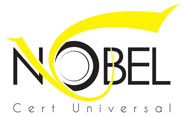For standardized colour comparison, it is necessary to have an assessor with normal colour vision and to have reproducible illumination and viewing conditions. It is usual to match colours to a standard in daylight, but the spectral composition of daylight varies considerably. Although it is difficult to control precisely the spectral distribution of artificial light sources, individual sources are more stable over a limited period than daylight and therefore enable more reproducible colour comparisons to be made.
Unless otherwise agreed, the methods specified in this International Standard use diffuse daylight or an artificial daylight source representative of a phase of daylight with a correlated colour temperature of 6 500 K (CIE standard illuminant D65) for routine comparisons. If there is a dispute, the comparison should always be made under the specified artificial light.
ISO 11037:2011 establishes guidelines for the sensory evaluation of the colours of products. The procedures specified are applicable to solid, semi-solid, powder and liquid products, which can be opaque, translucent, cloudy or transparent in nature, as well as matt or glossy.
General information is also given about the viewing and lighting conditions to be used in various situations in sensory analysis, such as difference testing, profile analysis and grading methods, performed by panels of selected assessors or by individual experts in special situations.
ISO 11037:2011 does not deal with consumer testing or with assessment of the metamerism of colours of food products.

